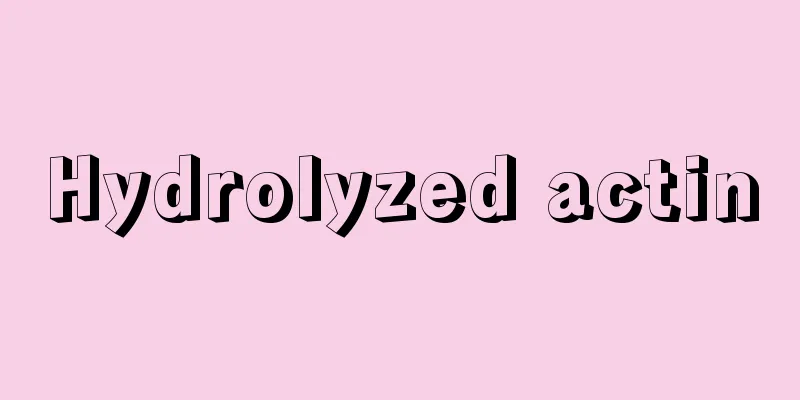Hydrolyzed actin

|
All cells, tissues and organs in our body are made up of proteins, and various types of proteins play different functions. In order to compensate for or enhance the function of a certain protein, people will obtain the corresponding protein through acquired supplements. Collagen is a typical example, and the same is true for hydrolyzed actin. So, what are the effects of actin hydrolysis? Actin is a medium-sized protein consisting of 375 amino acid residues and is encoded by a large, highly conserved gene. It exists in two forms, monomers and polymers. The monomeric actin is a spherical molecule composed of a polypeptide chain, also known as globular actin (G-actin), and its appearance is similar to that of a peanut. Actin polymers form actin filaments, called fibros actin (F-actin). Under an electron microscope, F-actin is a double helix with a diameter of 8nm and a distance between helices of 37nm. Actin is the most abundant protein in eukaryotic cells. In muscle cells, actin accounts for 10% of the total protein, and even in non-muscle cells, actin accounts for 1-5% of the total cell protein. effect Actin is a medium-sized protein consisting of 375 amino acid residues and is encoded by a large, highly conserved gene. The molecular weight of a monomeric actin molecule is 43 kDa, and it has three binding sites. One is the ATP binding site, and the other two are binding sites for actin-binding proteins. Actin is expressed in at least six isomeric forms, which are divided into three types: α, β, and γ. Actin in higher animal cells can be divided into three categories according to different isoelectric points. α is distributed in various muscle cells, β and γ are distributed in muscle cells and non-muscle cells. There are three alpha actins (skeletal, cardiac, and smooth muscle), one beta actin, and two gamma actins (gamma smooth muscle and gamma non-smooth muscle). Eukaryotic cells require networks of actin fibers to control and maintain their morphology and internal structure, and the first step in the formation of these networks is the nucleation of new actin fibers. Multiple cellular factors have the ability to form new actin fibers, and each factor can form a specific network. The best-studied of these is the actin-related protein 2/3 complex (Arp2/3), which forms networks by recruiting new fibers around pre-existing fibers. To generate motility and move the cell membrane, Arp2/3 requires the assistance of other proteins, including capping protein (CP). Capping proteins are important components of the nucleated Arp2/3 network, the actin network that drives motility. Traditional theory holds that rapid movement requires rapid growth of actin fibers, and therefore CP can increase the concentration of steady-state actin monomers by capping the rapidly growing hook ends of most actin fibers in the cell. The increased monomer concentration can cause the remaining small amount of uncapped actin filaments to extend more rapidly, resulting in faster movement. However, the above theory has never been verified experimentally. |
<<: The latest recruitment information for roast duck chef
>>: The role of hydrolyzed collagen
Recommend
Ranking of 27 venomous snakes in China
We all know that China is the third largest count...
Can headstand help lose weight
In life, many people blindly pursue weight loss. ...
What's the matter with the red pimples on the waist
Diseases are very common in people's daily li...
TCM Syndrome Differentiation and Type Cure for Laryngeal Cancer
Aunt Zhang's health is not very good. She sta...
Patients with cardia cancer must pay attention to their main symptoms
As a common tumor disease, cardia cancer can caus...
Does the electric heater have radiation?
Electric heaters are household appliances used by...
The difference between milk calcium and calcium lactate, a reasonable understanding can better supplement nutrition
Generally speaking, many people confuse lactic ac...
Are high blood lipids and high triglycerides the same thing?
In today's life, we often see people with big...
Is it necessary to go to the hospital for hamartoma?
Is it necessary to go to the hospital for hamarto...
Is it easier to treat the symptoms of early esophageal cancer?
If esophageal cancer is not treated in time, it c...
What are the symptoms of rectal cancer
The early symptoms of rectal cancer are not typic...
A small piece of my tooth fell off. What happened?
If a small piece of tooth falls off, it may be ca...
How to remove a mole on the inner thigh?
On the surface of our human body, due to the infl...
Can osteosarcoma be treated with traditional Chinese medicine?
Osteosarcoma is a very common malignant tumor, wh...
Can muscle-building powder help gain weight?
If you want to gain weight effectively, nutrition...









